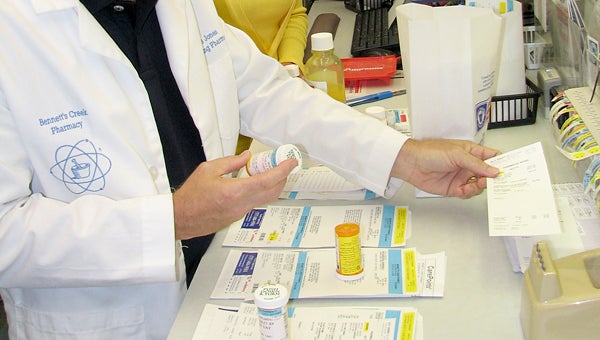Danger in the home
Published 7:44 pm Thursday, October 21, 2010

Pharmacist Chris Jones, of Bennett’s Creek Pharmacy, dispenses prescriptions at the Bridge Road pharmacy in June. Experts are trying to educate parents on the dangers of leaving their prescriptions unattended, especially with teens in the house.
The illegal consumption of drugs isn’t something that just starts on the streets — it can start in your home.
Each day, more than 2,500 teenagers abuse prescription medicine for the first time, and government statistics show that 70 percent of people 12 years old and older say they got them from a friend or relative.
To help put a dent in this national problem, pharmacists from across the country are participating in the National Medicine Abuse Awareness Month and urging people to properly store and dispose of prescription medicines.
“A lot of teens just take them to see what will happen,” said Keith Hodges, a pharmacist based in Gloucester. “I’ve seen it before. It happens. These medicines might help people every day, but they’re not for anyone else’s consumption.”
Hodges serves as an executive committee member of the National Community Pharmacists Association and is assistant clinical professor in the Department of Pharmacy at Virginia Commonwealth University and Medical College of Virginia School of Pharmacy.
Pain relievers, stimulants and anti-anxiety medications are all popular among abusers.
In fact, prescription drugs are the second-most abused drugs, after marijuana.
Prescription drugs are so popular among teens because they are easily accessible. There is no drug dealer involved. No cash is needed. All teenagers have to do is open their parents’ medicine cabinet.
A popular trend among teenagers is having a “pharm party.”
“The kids just bring whatever is in their parents’ cabinets,” said Amy Riggs, pharmacist at Bennett’s Creek Pharmacy. “They put all the pills in a jar, shake up the jar and pick pills at random.”
Hodges said that the first step to putting a dent in prescription abuse is making people aware of the dangers.
“People need to be educated when it comes to having prescription medicines at home,” Hodges said. “Keeping them in your medicine cabinet just isn’t safe. Anyone, from your guests to your children, can access them. Simple steps can be taken to prevent that.”
Storing them in a cool place, where they will not be compromised by humid or hot conditions, is one of the first steps.
They should also be in a locked location and an inventory should be taken at least twice a year to make sure leftovers aren’t being abused.
Never share medications with others because “what works for me, doesn’t work for everyone else,” Hodges said.
If you are finished with a prescription, it is imperative unfinished bottles are properly discarded.
“If people don’t need the medication anymore, they should crush them up and mix them with an undesirable substance, like coffee grounds or kitty litter,” Riggs said. “Then, put it in a plastic, zippered bag and dispose of it. Do not flush them, though.”
For more information on how to properly dispose of prescriptions, visit www.safeguardmymeds.org.
Safeguard My Meds is an education initiative by the National Community Pharmacists Association and Purdue Pharma L.P. that offers information about simple yet important steps that can be taken in the home to protect prescription medicine.


